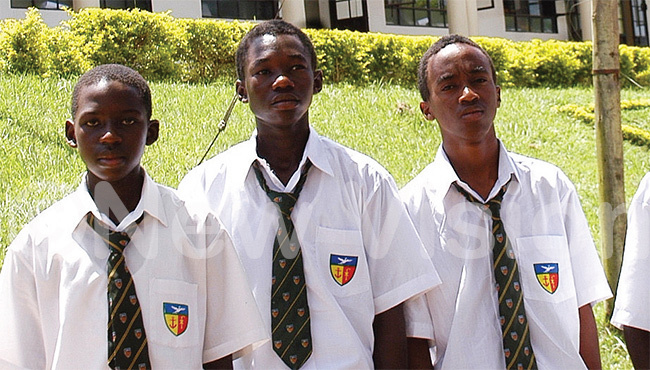Designer uniform fad gone overboard
Feb 26, 2020
Uniforms in Uganda used to be mainly khaki shorts for boys and ‘Jinja’ (cotton made) skirts. Often, this set of uniforms was accompanied by simple hand-woven sweaters.

EDUCATION FASHION
KAMPALA - Some years back, unlike the khaki shorts for boys and ‘Jinja' (cotton made) skirts for girls, designer uniform fad swept across schools. However, this bite so hard in the parents pockets as it became so costly to purchase a uniform. Below is the story the New Vision ran in 2011:
It is the blazer, it is the tie, it is everything about the new school uniform that is making Jowelia Isanga bitter.
Her daughter was recently sent home for wearing a set of uniform which the school phased out last year. This was upsetting for this 45-year-old single mother, but not as the next discovery: The girl was in a new uniform that looked like a suit - complete with a coat and tie. Isanga was asked to pay for it if her daughter was to return to school.
"They should give us a grace period of up to a year. You don't phase out the uniform at the end of one term and then the next you expect us to have got the money for the new set," she laments.
The debate over mandatory uniforms in the public school system is raging across the country and in our own backyards. Proponents claim uniforms improve many areas in the educational arena while opponents vigorously challenge these claims.
Most hard-pressed parents particularly accuse the schools of snobbery and creating segregation considering that such uniform on average cost twice or even thrice than the ordinary school uniform.
And that is not all: they must be bought at the school. Idris Turinawe, a businessman and father of two had hoped to shop around for the best bargain in Kiyembe but was told the uniforms have to be bought at the school.
"They told me they have to attach the school logo and badge on everything," he says. Eventually, the poor man spent about sh300,000 on the blazer uniform for his son who recently joined S.1, compared to only sh130,000 for the ordinary sweater and trouser uniform for his other child in a different school.
"Why dress up kids in clothes meant for the office," Turinawe wonders.
Some critics also point to the fact that the uniform seems to dictate on which schools children should go to. One parent tells of the story in which her daughter fought hard to join one of the St. Lawrence Schools, apparently because, "Their uniform is cool."
Until a few decades ago, the issue of blazer uniforms in schools has been largely a western world affair. Uniforms in Uganda used to be mainly khaki shorts for boys and ‘Jinja' (cotton made) skirts. Often, this set of uniforms was accompanied by simple hand-woven sweaters. Despite the apparent opposition, proponents counter that there is anecdotal evidence of smart uniforms increasing standards and discipline.
 Students in blazers
Students in blazers
Sempala Kigozi, a senior educationist and chairperson of the Wakiso Headteachers Association, argues that with more schools coming up, it is just as logical to simplify the school uniform. "Each school wants a stronger community feel," he says.
Also, Kigozi reasons, there is some evidence that such uniforms foster a business-like atmosphere, hence changing attitudes and discipline among students.
Keneth Hilda Mugabiirwe, a post-graduate student of psychology and counselling at Makerere University also concurs: "When you look smart, you think smart."
For most schools, however, the idea seems to do with the label culture among students.
The designer fad has gone overboard and children have become more fashion savvy, making the ordinary school uniform appear out of date.
Some headteachers say some students have resorted to customising their staid uniform outfits and often, the result is messy. For instance, the girls take to shortening and tightening their skirts as if to rebel against the severity of the school uniform.
 Namilyango boys in ties
Namilyango boys in ties
